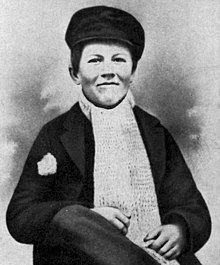Google is pretty clever! The sponsored ads are looking more and more like organic listings recently. The two spaces are blending together. The new features, listed below, are both taking up more real estate on the page and feeling a lot like natural results.
I think an interesting exercise is to compare a search engine results page screen shot from a few years ago to a recent SERP.
Here is a screen shot from a search for 'rack door' in October 2007: vs. February 2011 search results for 'rack door':

So, what has changed since 2007? In this post, I will outline 10 features that we think are blending the paid and natural search arenas, and making the PPC ads a bit more enticing to click on.
1. Label Change from 'Sponsored Links' to 'Ads'. Notice the label on the top right of the page has changed from 'Sponsored Links' in the 2007 screen shot above to 'Ads' in the last few months. This 'Ads' header seems to whisper that these are advertisements.
2. Background Color. The screen shot from 2007 shows a yellow background color for ad(s) above the organic listings, vs. the pale purple background in the 2011 results page. And, more recently, we are seeing a peach color background for some of the search results. Some monitor contrast settings show these background colors as practically invisible, making these PPC ads look like top organic listings. Pretty tricky, Google.
Feb. 2011 SERP showing peachy color:

3. Lower-case Display URLs. The recent change to lower case display URLs, shown in the 2011 screen shot above, makes the ads look more like the natural listings below.
4. Sitelinks. The Sitelinks mirror the links in the organic listings. The neat thing about Sitelinks in search is not only do Sitelinks allow for more ad space on the page, but the advertiser also has control over what link text and landing pages are used to draw users into the site. See 'Gymboree' screen shot below:

5. Headline Merged with line 1. Starting this month, Google is showing a longer look to the headline for those ads that appear in top spots, above the natural listings. More specifically, ads are showing with 'headline – line 1', in cases where line 1 ends in proper punctuation. This makes for longer hyperlinks, like the natural links below these PPC ads. (See 2nd and 3rd ad in 'rack door' 2011 screen shot above to see this in action.)
6. Seller Ratings make the PPC ads more attractive. These are nice because they give users a sense of confidence in the site, to encourage a click event. Also, they allow advertisers to take up one more row of space on the SERP. Notice the same 'ratings' look in both the PPC and organic listings below.

7. Product Listing Ads. These image ads are taken from the Google Base feed and resemble the 'Shopping Results' images shown in the natural listings landscape. PLAs allow advertisers to take up more space on the page, and can be coupled with the same advertiser's traditional PPC text ads. (See image in top right corner, in Feb. 2011 'rack door' screen shot above.)
8. Product Extensions. Notice the product extension plus box for the 'Target' ad in the 2011 search engine results above. In addition, PEs are sometimes displayed with the items listed out, as in the example below. The new 'look' with the plus box already extended looks especially 'organic' in nature as it mirrors the 'Shopping Results' below the paid landscape. So, like PLAs, Product Extensions, essentially monetize the free Google Shopping product. An added benefit of PEs is that they take up more real estate on the page.

9. Comparison Ads. Search for 'mortgage rates' to see this in action. Theseinteractive ads look a lot like organic listings!

10. Location Extensions. These 'extended' location paid ads look similar to the natural places listings, with detailed address and phone number displays. Also, the map on the right rail shows PPC ads more prominently by marking the location with a blue pin, rather than the traditional red colored pins.

So far, our analysis has shown a lift in CTR for many of these new features. Time will tell if the latest features ('headline – line 1' coupling, and lower case display URLs, for example), will also bump up the CTR. We'd imagine that these will lift the click through rate, as users click on these ads, thinking they are organic listings. Great. But, what we'll really need to watch is a change in closing ratio, as these potential added clicks may not convert. Of course, if the closing ratios look good, it is good news for advertisers, retailers, and Google!
We are curious, what are you seeing?
Thank you to Matthew Mierzejewski and Mark Ballard for collaboration on this post.

























